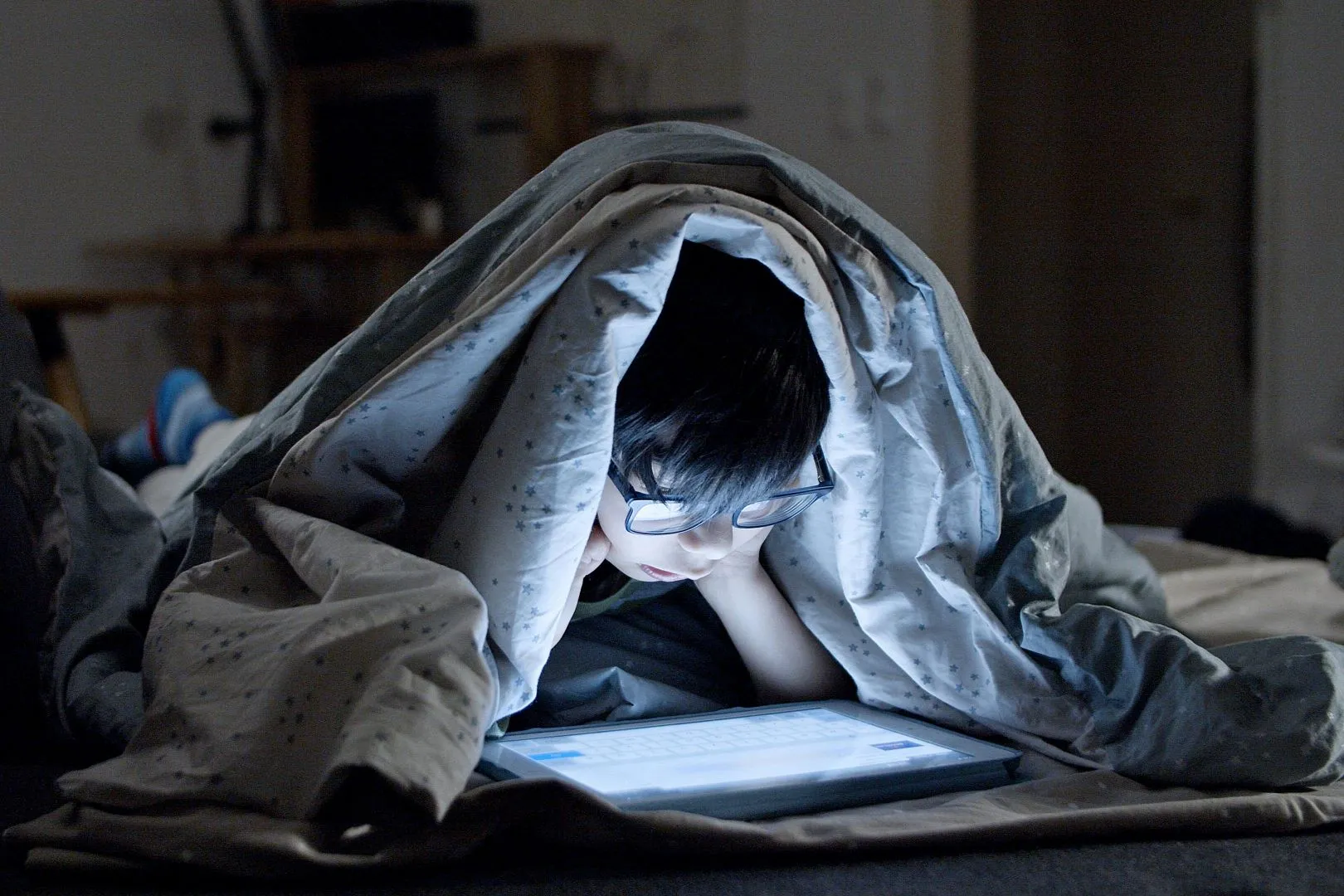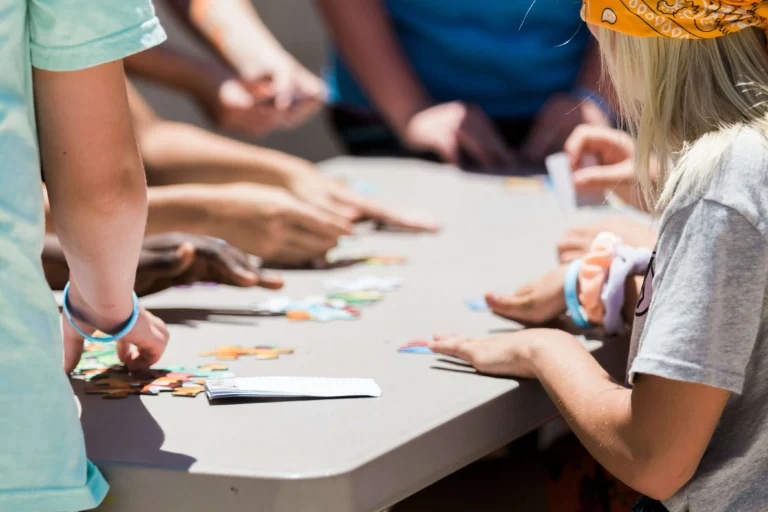Did you know the average child spends over 7 hours a day in front of a screen? While screens have become a significant part of our lives, the effects of screen time on children’s mental health are concerning. Studies show that excessive screen use can lead to anxiety, trouble focusing, sleep disturbances, and reduced emotional resilience. As parents, finding ways to reduce screen time and foster healthy screen habits is essential to support our kids’ overall well-being.
At Lulabico, we know that nurturing kids’ mental health is one of the most vital roles parents take on, especially in today’s screen-dominated world
The challenge lies in striking a balance. Technology isn’t going anywhere, and it’s unrealistic to remove it entirely—but small changes can make a big difference. By setting clear boundaries, encouraging alternative activities like outdoor play or creative pursuits, and modeling balanced screen use ourselves, we can create a healthier environment for our children. These habits not only reduce screen time but also encourage valuable skills like creativity, problem-solving, and face-to-face communication.
It’s about empowering families to create thoughtful routines that prioritize kids’ mental health without completely eliminating screens. With the right approach, we can guide our children to use technology intentionally, while also helping them embrace the joys of screen-free moments that nurture their growth. Every step counts, and every small change can lead to a healthier, happier future for our kids.
What Science Says About Screens and Young Minds
Did you know that too much screen time can reshape how young minds develop? It’s true—excessive screen exposure has been linked to increased anxiety and depression in children. The nonstop stream of notifications, fast-paced games, and endless videos overstimulates their brains, making it harder to regulate emotions and develop strong social skills. Over time, kids may struggle to navigate real-world relationships and situations effectively.
Sleep problems are another hidden cost of too much screen time. The blue light from screens suppresses melatonin, disrupting natural sleep cycles. The result? Restless nights lead to cranky mornings, poor focus, and behaviour challenges like irritability or even aggression. Sound familiar?
The long-term risks are equally concerning. Kids glued to screens often face reduced academic performance, as they struggle to focus and retain information. Addiction tendencies can also emerge, with kids craving more screen time to feel the same excitement or reward. And here’s something we don’t often think about—creativity. Hours spent in front of screens can limit opportunities for imaginative play and exploration, crucial for their emotional and cognitive growth.
But here’s the good news: knowledge is power. By understanding the effects of screen time on kids’ mental health, you’re already taking the first step toward creating healthier habits. It’s not about banning screens altogether but striking a balance that allows kids to thrive in both the digital and real world. After all, a little awareness can go a long way in raising happy, well-rounded children.
How to Tell If Your Child’s Screen Time Is Becoming a Problem
Have you noticed your child becoming unusually irritable, withdrawn, or completely absorbed in their device? These could be signs of screen overuse, a concern that’s growing as we navigate the digital age. Here are some key indicators to watch for:
Behavioural signs:
- Increased irritability, frustration, or mood swings
- Withdrawal from family activities or hobbies
- Loss of interest in offline activities
Physical signs:
- Persistent eye strain or headaches
- Fatigue or lack of energy
- Difficulty falling asleep or disturbed sleep patterns
Social effects:
- Reluctance to engage in real-world interactions
- Struggles to connect with peers or family members
These changes can often be subtle at first, but they signal that screen time is affecting your child’s well-being. The effects extend beyond just their mental health; physical and social aspects are also at risk. Recognizing these signs early is crucial for helping your child develop a healthier relationship with screens. Consider taking proactive steps like:
- Setting screen time limits to balance online and offline activities
- Scheduling device-free family time to foster connection and bonding
- Modeling healthy habits by reducing your own screen time
By making small changes, you can guide your child toward healthier screen habits, supporting their growth in both the digital world and the real one.
Practical Tips for Managing Screen Time at Home
Managing screen time at home can feel like a daunting task, but with a few simple strategies, you can create a balanced environment that supports your child’s mental health and well-being. The goal is to reduce screen time while encouraging healthy habits and meaningful real-world interactions. Here’s how you can get started:
Set Clear Rules
A family screen time plan helps establish boundaries and ensures consistency. Set age-appropriate limits that balance educational and recreational screen time. Consider these tips:
- For younger kids, aim for no more than an hour per day.
- For older kids, limit non-educational screen time to a set number of hours, keeping weekdays more restricted than weekends.
- Have regular discussions with your kids about why these rules are important for their mental health and development.
Designate Screen-Free Zones
Creating spaces where screens aren’t allowed promotes family time and healthier habits. Consider these areas:
- Bedrooms: No screens at bedtime to promote better sleep.
- Dining tables: Encourage conversations and mindful eating during meals.
- Family gatherings: Make it a rule to disconnect from screens and enjoy quality time together.
Use Parental Controls
Technology has its benefits, but it’s essential to monitor your child’s screen usage to ensure it’s age-appropriate. Parental controls can help you:
- Block or restrict access to inappropriate content.
- Set time limits for apps or games.
- Track usage to keep a healthy balance between online and offline activities.
By setting these boundaries, you’re taking steps to reduce screen time, protect your child’s mental health, and foster a lifestyle that encourages healthier, more balanced habits.
Fostering Creativity and Connection Without Screens
Encouraging your child to engage in screen-free activities not only helps reduce screen time but also promotes healthier habits that support their mental well-being. Kids thrive when they are encouraged to explore their creativity, connect with others, and stay active without relying on screens. Here are some ways to integrate more screen-free activities into your child’s daily routine.
Outdoor Play and Sports
Encourage physical activities like running, cycling, swimming, or team sports. Outdoor play boosts mental and physical health, helping kids reduce stress and improve mood.
Creative Arts
Foster creativity by providing materials for painting, drawing, or crafting. These activities stimulate imagination, enhance focus, and allow children to express their emotions in a healthy way.
Reading Books Together
urn reading into a family activity by reading aloud together or having quiet reading time. This not only reduces screen time but also strengthens bonds and enhances cognitive development.
Hands-On Learning Projects
Explore STEM kits, puzzles, or DIY projects that engage kids’ minds in problem-solving. These activities stimulate curiosity, foster creativity, and help children learn through exploration.
Integrating these screen-free activities into your child’s daily life encourages a balanced routine, promoting healthier mental habits. By prioritizing time for physical, creative, and educational activities, you can help your child develop skills that support emotional regulation and reduce the negative effects of excessive screen time. The goal is to create an environment where both the mind and body can thrive without the constant need for screens.
Be the Change You Want to See in Your Kids
As a parent, one of the most powerful ways to influence your child’s relationship with screen time is by modeling healthy behavior. Children learn by observing, so when you prioritize real-world interactions and set boundaries around screen use, they are more likely to adopt similar habits. Here’s how you can set a positive example.
Reduce Your Own Screen Time
If you find yourself glued to a device, it’s important to consciously reduce your own screen time. This not only helps you be more present but also shows your children that it’s possible to enjoy life without constantly checking a phone or tablet.
Prioritize Family Interaction
Instead of reaching for your phone during family meals or gatherings, make an effort to connect with your children. Share stories, play games, or simply enjoy each other’s company. These moments of undistracted bonding help improve kids’ mental health and create a sense of security and closeness.
Share Hobbies and Interests
Take the time to engage in activities your child enjoys, whether it’s reading, painting, or playing outside. By showing interest in their hobbies, you not only reduce screen time but also strengthen your relationship and encourage your child to explore passions beyond the digital world.
By setting a healthy example, you guide your child toward more balanced habits. When you consciously model these behaviours, you make it clear that life off-screen can be just as enriching, fostering better mental health, emotional growth, and long-term well-being for your child
When and How to Use Screens Mindfully
While it’s important to reduce excessive screen time, technology can be a valuable tool for learning and creativity. The key is to use screens mindfully and with purpose. Here’s how to strike a balance.
Screen Use for Schoolwork and Education
With remote learning and educational apps, screens can support your child’s education. Encourage the use of screens for schoolwork, online learning platforms, and educational content. These types of screen time can enhance your child’s cognitive development and help them acquire new skills. Make sure that the content is age-appropriate and aligned with their educational goals.
Co-Viewing and Engaging
One of the best ways to make screen time positive is by co-viewing. Sit with your child while they watch a show or play a game, and engage with them about what they are experiencing. Discuss the characters, themes, or lessons learned. This interaction helps develop critical thinking skills and ensures that your child is not just passively consuming content. It also gives you an opportunity to guide their understanding of what they watch.
Set Clear Boundaries
Even when screen time is educational or interactive, it’s crucial to set clear boundaries. Decide together on screen time limits and stick to them. This encourages healthy screen habits and helps your child avoid overuse, which can lead to the negative effects of screen time on children, such as poor mental health or disrupted sleep patterns.
What to Do When Limiting Screens Feels Impossible
Limiting screen time for kids can be a challenging task, and it’s normal to encounter obstacles along the way. Whether it’s pushback from your child, your own reliance on screens, or social pressures from peers, overcoming these challenges requires patience and a consistent approach. Here are some practical strategies to stay on track.
Address Pushback from Kids
Kids are naturally drawn to screens, and it can be tough to limit their access. When pushback occurs, involve them in the process by setting clear, collaborative rules. Explain the reasons behind screen time limits, emphasizing the importance of their mental health and well-being. Offer alternatives, like fun, engaging activities, to help them see the benefits of screen-free time.
Model Healthy Habits
As a parent, it’s essential to set a good example. If you’re constantly glued to your phone or screen, your child is more likely to follow suit. Reduce your own screen time by prioritizing face-to-face interactions and family activities. When your child sees you modeling healthy screen habits, they’re more likely to adopt them.
Combat Social Pressures
Peer pressure can be a significant factor in your child’s screen use, especially as they get older. Encourage open communication with your child about their social media and gaming habits. Help them develop strategies to navigate peer influence, like choosing screen-free activities when hanging out with friends.
Staying consistent with healthy screen habits, even when it’s tough, will help you and your child develop a more balanced, mindful relationship with technology, which ultimately supports better kids’ mental health and overall well-being.
Why Every Small Change Matters
When it comes to improving your child’s screen time habits, it’s important to remember that every small step counts. Change doesn’t happen overnight, but with consistent effort, you can foster healthier habits that benefit your child’s mental health. Start by taking manageable actions, and as you see the positive results, celebrate the progress along the way. Here’s how to begin.
Start Small
Begin by setting one simple screen time rule, like limiting screen use before bedtime. Gradually build from there, adding more structure as your child adapts.
Celebrate Progress
Acknowledge the small victories, whether it’s your child spending more time outdoors or choosing a family board game over screen time. Positive reinforcement will encourage them to keep making good choices.
Be Patient
Shifting habits takes time, and there may be moments of resistance. But don’t get discouraged. Each effort to reduce screen time helps safeguard your child’s mental health in the long run.
Fostering healthier screen habits is an investment in your child’s well-being. By reducing excessive screen time, you’re helping them develop stronger emotional regulation, better sleep patterns, and improved social skills. At Lulabico, we believe in the power of small changes to make a big difference for both parents and kids.
Take the first step today—whether it’s creating a screen time rule or planning a screen-free weekend activity. Your kids’ mental health will thank you, and you’ll be building a foundation for healthier, happier family connections.





